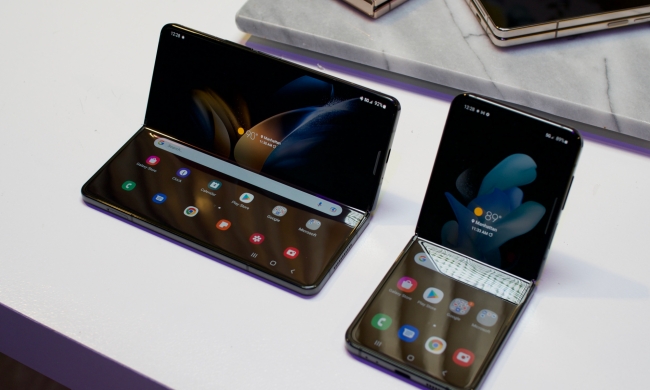Introduction
Welcome to Digital Trends! In this post, I will be comparing the iPhone and Android phones to help you decide which one is best for you. At Digital Trends, our goal is to provide you with comprehensive comparisons between different devices and services. Whether you’re looking for a new laptop, smartphone, or want to set up a smart home, we have guides to assist you every step of the way.
About Digital Trends
Digital Trends is a trusted online source that offers news, reviews, deals, and guides on a wide range of topics. Our website covers various categories, including computing, mobile, gaming, entertainment, audio/video, smart home, and cars. We strive to keep you informed about the latest trends and advancements in technology.
Categories Covered by Digital Trends
At Digital Trends, we cover a diverse range of categories to cater to all of your tech needs. Whether you’re interested in the latest laptops, software updates, PC gaming, 5G, or devices like the iPhone and Xbox, you’ll find valuable insights and information on our website. We also provide content related to audio/video, smart home technology, and self-driving cars, ensuring that you’re up to date on the latest tech innovations.
Types of Content Provided by Digital Trends
Our website offers a variety of content to keep you informed and entertained. From in-depth reviews and detailed product comparisons to helpful guides and informative articles, we have it all. We also feature best product lists in different categories like computing, mobile, audio/video, and gaming. Whether you’re looking for tips and tricks to enhance your smartphone experience or want to know which shows and movies are trending on streaming platforms like Netflix and Disney Plus, Digital Trends has got you covered.
Digital Trends is your go-to source for all things tech. With our comprehensive comparisons, informative guides, and up-to-date news and reviews, you can make informed decisions about your tech purchases. So, let’s dive into the iPhone vs Android comparison and discover which phone suits you best!

Overview of iPhone and Android
Brief Introduction to iPhone
When it comes to smartphones, the rivalry between iPhone and Android is well-known. As a tech enthusiast, I have always been intrigued by the features and functionalities offered by these two popular operating systems. The iPhone, developed by Apple, has captivated millions of users worldwide with its sleek design, seamless integration, and user-friendly interface. Renowned for its top-notch security features, the iPhone offers a curated ecosystem of apps and services that are highly optimized for its hardware.
Brief Introduction to Android
On the other hand, Android, developed by Google, boasts a wide range of smartphones from various manufacturers. This open-source operating system provides users with unparalleled flexibility, customization options, and compatibility with a vast array of third-party apps and accessories. Android devices are renowned for their cutting-edge hardware specifications, diverse pricing options, and excellent multitasking capabilities.
Both iPhone and Android have their unique strengths and weaknesses, making it crucial for consumers to understand their preferences and requirements before making a choice. In the following sections, we will delve deeper into the specific features, performance, and user experiences offered by each operating system, enabling you to make an informed decision when considering a new smartphone. So, let’s dive in and explore the world of iPhone and Android!

Design and Build Quality
When it comes to comparing phones, one of the key factors that often plays a significant role in a consumer’s decision-making process is the design and build quality. Both the iPhone and Android devices offer their own unique approaches in this aspect.
iPhone Design and Build Quality
The iPhone is known for its sleek and elegant design. With its premium materials and attention to detail, it exudes a sense of luxury and refinement. Apple’s meticulous craftsmanship is evident in every corner of the device, from the smooth curves to the seamless integration of hardware and software. The iPhone’s slim profile and lightweight construction make it comfortable to hold and use, while the iconic home button and the clean, minimalist design add to its overall appeal. The latest iPhone models boast features like edge-to-edge displays and facial recognition technology, further enhancing the user experience.
Android Design and Build Quality
Android devices, on the other hand, offer a wide range of designs to cater to different tastes and preferences. From sleek and minimalist to bold and vibrant, Android phones come in various shapes, sizes, and finishes. The build quality of Android devices can vary depending on the manufacturer, but many smartphones in this category are made with durable materials such as metal and glass. Some Android phones also feature unique design elements, such as modular components or curved edges, that set them apart from the competition.
both the iPhone and Android devices excel in design and build quality, each offering its own distinctive aesthetic and construction. Ultimately, the choice between the two will depend on personal preference and individual priorities. Whether you prioritize elegance and sophistication or diversity and innovation, there is a phone out there that will suit your style.
Operating System and User Interface
The iPhone, powered by iOS, offers a seamless and intuitive user interface that is known for its simplicity and ease of use. With its clean design and minimalistic approach, navigating through the iPhone is a breeze. The iOS operating system provides a seamless integration between hardware and software, resulting in a smooth and responsive user experience. The iPhone’s user interface is consistent across all Apple devices, allowing for a seamless transition between different products.
Android Operating System and User Interface
On the other hand, Android, an open-source operating system, provides a high level of customization and flexibility. With Android, users can personalize their devices to suit their individual preferences. The Android user interface varies between different manufacturers and models, offering a wide range of designs and layouts. This diversity allows users to choose a device that matches their personal style and preferences.
Both iOS and Android offer unique features and advantages. iOS provides a more streamlined and uniform user experience, while Android offers a greater degree of customization and personalization. Ultimately, the choice between iPhone and Android comes down to personal preference and the specific needs of the user.
while iPhone and Android differ in terms of operating systems and user interfaces, both offer their own set of benefits. Whether you prefer the simplicity and consistency of iOS or the customization and flexibility of Android, both options provide a user-friendly experience.

Features and Functionality
When it comes to comparing phones, two of the most popular choices are the iPhone and Android devices. Both platforms offer unique features and functionality that cater to different user preferences.
iPhone Features and Functionality
The iPhone is known for its sleek design and seamless user experience. It boasts a robust app ecosystem, with a wide range of apps available on the App Store. The iPhone also offers exclusive features such as Face ID, which provides a secure and convenient way to unlock your device and make secure payments. Additionally, Apple’s ecosystem allows for seamless integration across its devices, enabling easy sharing of files and continuity between your iPhone, iPad, and Mac.
Android Features and Functionality
On the other hand, Android devices offer a more customizable experience. With Android, you have the freedom to personalize your device to suit your preferences, from customizing your home screen layout to installing third-party launchers and widgets. Android also provides a larger variety of device options, catering to budget-conscious consumers as well as those seeking high-end flagship devices. Furthermore, Android devices offer expandable storage options and often come equipped with features like headphone jacks and USB-C ports.
both the iPhone and Android devices have their unique strengths and features. Ultimately, the choice between the two will depend on individual preferences and priorities. Whether you prioritize design, a seamless ecosystem, or customization options, both platforms have something to offer.
Performance and Speed
iPhone Performance and Speed
When it comes to performance and speed, the iPhone has always been a strong contender. With its powerful A-series processors and optimized iOS software, iPhones consistently deliver smooth and lag-free performance. Whether you’re multitasking, gaming, or using resource-intensive apps, the iPhone handles it all with ease. The iOS ecosystem ensures that apps run efficiently and are highly optimized for the hardware, resulting in faster load times and smoother overall performance.
Android Performance and Speed
Android devices, on the other hand, offer a wide range of options in terms of performance and speed. With Android devices, you have the flexibility to choose between different manufacturers, each with their own hardware and software optimizations. Higher-end Android devices are known for their impressive processing power and fast speeds, often surpassing that of iPhones. However, it’s important to note that lower-end Android devices may not deliver the same level of performance and speed as their flagship counterparts.
both iPhones and Android devices offer good performance and speed. iPhones provide a seamless and optimized experience across the board, thanks to their powerful hardware and iOS software. On the other hand, Android devices offer a range of options with varying levels of performance, allowing users to choose a device that suits their specific needs and budget. Ultimately, the choice between the two comes down to personal preference and specific requirements. Whichever you choose, you can expect a capable and efficient smartphone experience.
Camera Capabilities
When it comes to comparing phones, one of the most important aspects users consider is the camera capabilities. Both the iPhone and Android devices have made significant advancements in this area, offering users a wide range of features and high-quality photo and video capture.
iPhone Camera Capabilities
The iPhone has long been renowned for its exceptional camera quality. With each new release, Apple continues to innovate and improve its camera technology, offering users stunning image clarity and sharpness. The latest iPhone models feature impressive capabilities such as Night mode, Deep Fusion, and Smart HDR, which allow users to capture stunning photos even in challenging lighting conditions. Additionally, the Portrait mode on iPhones creates beautiful, professional-looking photos with depth-of-field effects.
Android Camera Capabilities
Android devices, on the other hand, boast a diverse range of camera capabilities across different manufacturers. From flagship models to budget-friendly options, Android phones offer users a variety of camera features to suit their needs. Many Android devices feature multiple lenses, allowing for wide-angle, telephoto, and macro shots. Some manufacturers have also introduced advanced software algorithms to enhance image quality and produce vibrant, detailed photos.
both the iPhone and Android devices have made significant advancements in camera technology, providing users with exceptional photo and video capabilities. Whether you prioritize a wide range of shooting options or professional-looking portraits, both options offer impressive camera capabilities to enhance your photography experience.

Conclusion
Summary of iPhone vs Android Comparison
After comparing the iPhone and Android phones, it’s clear that both options have their merits. The iPhone offers a seamless user experience, with a sleek design and a wide range of exclusive features. On the other hand, Android phones provide more customization options and a wider variety of devices to choose from.
Factors to Consider in Choosing a Phone
When deciding between an iPhone and Android, several factors should be taken into account. Firstly, consider the operating system. iOS offers a user-friendly interface and excellent security features, while Android provides more flexibility and customization options. Additionally, consider your budget and desired features. iPhones tend to be more expensive upfront, but Android offers a wider range of price points and features to suit different budgets and preferences.
Next, think about the ecosystem you’re already invested in. If you have other Apple devices, such as a MacBook or iPad, the seamless integration of an iPhone may be a major advantage. On the other hand, if you use Google services and have an extensive library of Android apps, sticking with an Android phone may be more convenient.
Finally, consider the hardware and camera capabilities. iPhones are known for their high-quality cameras, while Android phones offer a wider variety of camera options and features. Consider your photography needs and preferences when making a decision.
Overall, the choice between an iPhone and Android ultimately comes down to personal preference and priorities. Both options have their strengths, so it’s important to weigh the factors that matter most to you before making a decision.